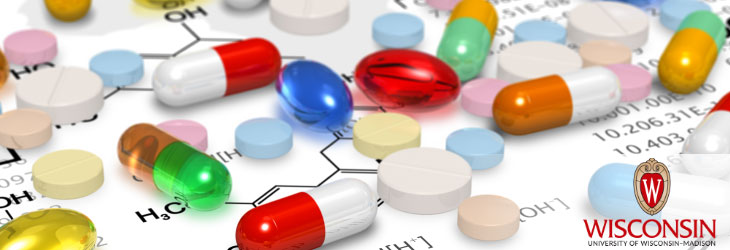Therapeutics & Vaccines

New and More Potent UGM Inhibitors for Treating Tuberculosis, Other Microbial Infections
WARF: P160093US02
Inventors: Laura Kiessling, Valerie Winton, Alexander Justen
The Wisconsin Alumni Research Foundation (WARF) is seeking commercial partners interested in developing a new generation of compounds to combat tuberculosis and other diseases.
Overview
Mycobacterium tuberculosis, the causative agent of tuberculosis, is responsible for eight million human infections and two million deaths worldwide each year. M. tuberculosis infections can be treated by antibiotics, but resistant strains are on the rise. To combat resistance, novel targets for antimicrobial drugs are needed.
An enzyme known as uridine 5`-diphosphate (UDP) galactopyranose mutase, or UGM, is one such target. UGM plays a key role in the formation of UDP-galactofuranose (Galf), which is present in many pathogens and is an essential cell wall component in mycobacteria like M. tuberculosis. UGM is a particularly attractive drug target because no comparable enzyme exists in humans. Additionally, current tuberculosis drugs do not target UGM, so compounds that block UGM should be effective against drug resistant strains.
An enzyme known as uridine 5`-diphosphate (UDP) galactopyranose mutase, or UGM, is one such target. UGM plays a key role in the formation of UDP-galactofuranose (Galf), which is present in many pathogens and is an essential cell wall component in mycobacteria like M. tuberculosis. UGM is a particularly attractive drug target because no comparable enzyme exists in humans. Additionally, current tuberculosis drugs do not target UGM, so compounds that block UGM should be effective against drug resistant strains.
The Invention
UW–Madison researchers have developed a new set of UGM inhibitors to fight tuberculosis and other diseases caused by microbial infections. The compounds feature an N-acylsulfonamide motif and are more potent in vitro than inhibitors previously identified by the researchers.
Applications
- Development of novel therapeutics for diseases, such as tuberculosis, that are caused by microbial infections
- Research tools
Key Benefits
- Provides potent compounds that may result in therapeutics for tuberculosis and other diseases caused by Mycobacterium sp.
- May be useful in combination with other antibiotics
- Could be effective against drug resistant strains
Stage of Development
The compounds have been synthesized and tested in vitro against the bacterium Mycobacterium smegmatis and the nematode Caenorhabditis elegans.
Additional Information
Related Technologies
For current licensing status, please contact Rafael Diaz at [javascript protected email address] or 608-960-9847